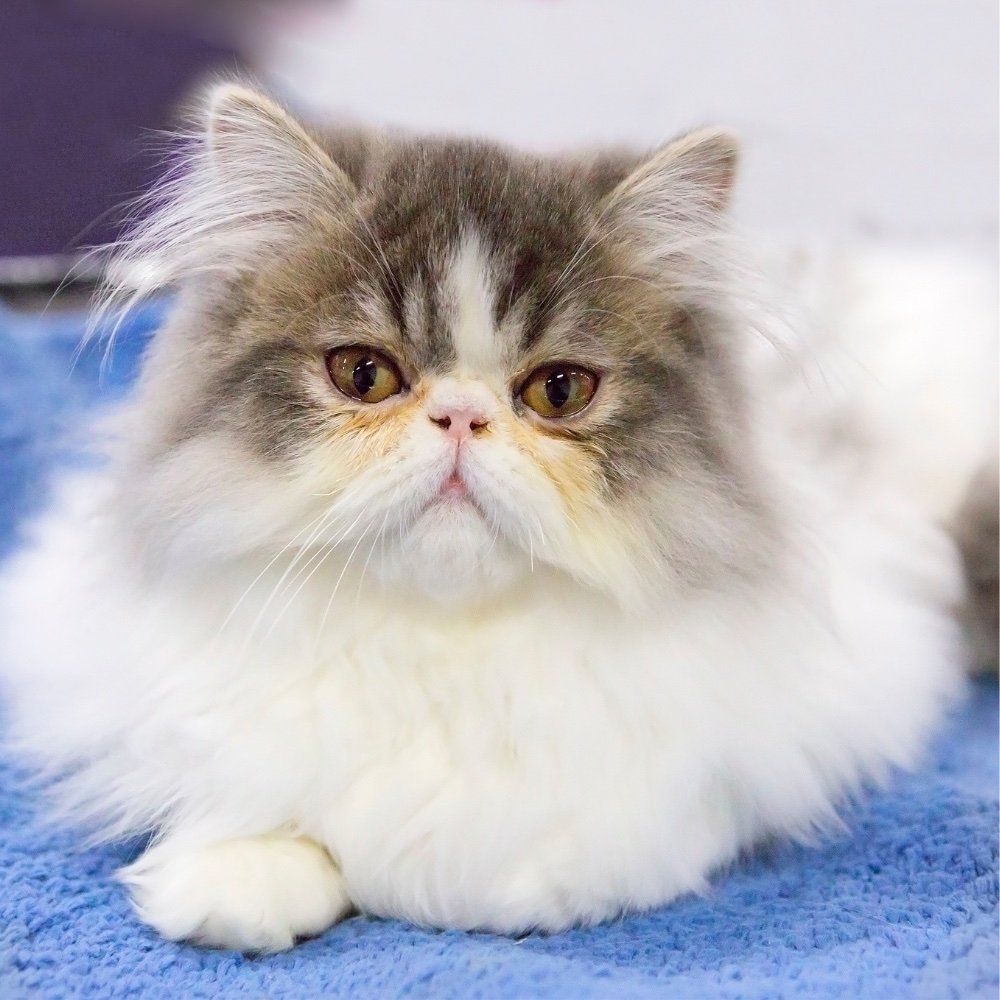
Persian cats have flat faces, which can lead to breathing problems. In addition, these flat-faced cats’ compressed airways make breathing harder. As a result, Persian may suffer respiratory problems. A surgery that widens their nostrils may be required to help them breathe correctly again.
Persian can’t pant as well as other cat breeds and can overheat easily. Therefore, Persian cat parents must be vigilant about keeping their Persians cool when the weather is hot.
It’s a good idea to become familiar with the signs of respiratory distress, so you’ll know if a vet’s visit is needed.
Brachycephalic Airway Syndrome
Brachycephalic airway syndrome is a respiratory disorder. Brachycephalic Airway Syndrome, also known as BAS, can sometimes be called feline upper airway syndrome. This syndrome results from a combination of anatomical abnormalities, some of which are genetic, affecting the cats’ upper airway. The Persian’s upper airway is the passage through which air moves from the nose, mouth, and throat to the lungs. As a result, Persian cats with BAS may have upper respiratory tract noises, such as snoring and honking, or other breathing difficulties, such as noisy breathing, stridor, or gurgling.
Signs of BAS
- Your Persian is lethargic and has a hoarse purr.
- Noisy panting, which can sound like snoring.
- Labored breathing with an open mouth after any exertion. This can cause a lack of oxygen.
- Gasping for breath.
- Excessive salivation.
- Your Persian cat’s eyes may water excessively, becoming inflamed and red from the constant discharge irritation.
Brachycephalic Airway Syndrome Diagnosis:
Your vet can diagnose brachycephalic airway syndrome by examining your Persian’s nose and throat closely. They may perform some tests, such as X-rays or a CT scan, to see the extent of the problem. Suppose your Persian cat is diagnosed with brachycephalic airway syndrome. In that case, he or she may be prescribed medication to help with the symptoms. Surgery may be required to open up your Persian’s airways and restore his or her nasal passages so he or she can breathe properly.
In severe cases of brachycephalic airway syndrome, a tube called a stent might be inserted into their nostrils. These stents keep the airways open until the nose heals.
Conclusion
So, do all flat-faced cats have breathing problems? Unfortunately, the answer to this question is yes. Persian cats often suffer from respiratory issues and may get sick more easily than breeds without flat faces. Owners of Persian cats need to take extra care to keep their pets cool and comfortable during hot weather. If you have a Persian cat, ensure you know the signs of respiratory distress, and take your pet to the vet if you are concerned. Brachycephalic airway syndrome is a serious condition, but your cat can live a full and healthy life with proper care.
I have a 7 year old Persian cat with Brachycephalic airway. She has struggled since birth and is a few oz. over 5 #. I Several years ago the vet was able to enlarge one nostril slightly. She has difficulty eating and I feed her soft cat food from a spoon. Lately she is giving me a hard time while I try to feed her and runs away. I might start at 5:30 PM and finally get food into her by 8:30 PM – 9:00 PM. It usually take me 1/2 hr to feed her. will go 24 hrs. and still not want to eat. About every 6 months she congested so bad the will give her an injection of an antibiotic and it help some what but they do not like doing it. One vet suggested Zyrtic No vet has suggested any medication. I have tried everything and it is affecting the quality of our life. LOOKING FOR HELP !!! Thank you, Janette